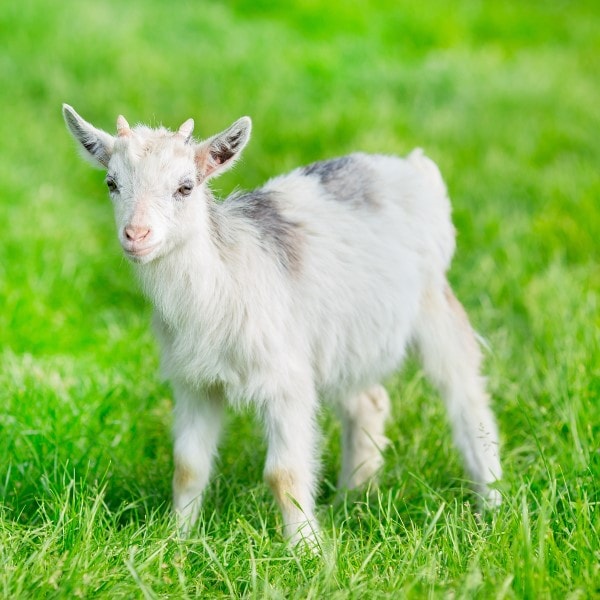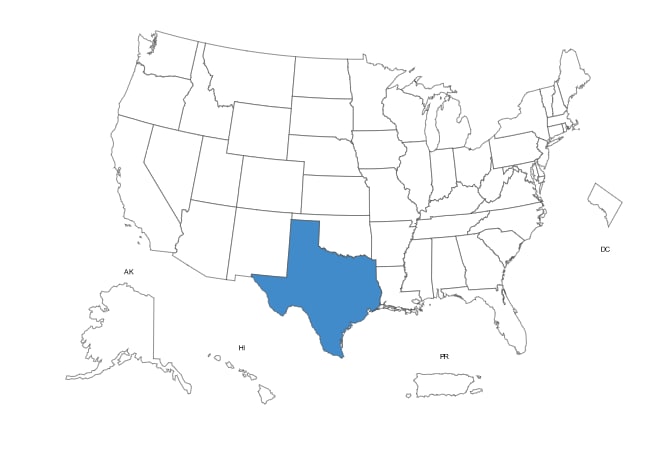Current H5N1 Bird Flu Situation in Dairy Cows

States with Outbreaks in Cattle
as of 4/26/2024 | Full Report >
Dairy Herds Affected
as of 4/26/2024 | Full Report >
Domestic Summary
A multi-state outbreak of HPAI A(H5N1) bird flu in dairy cows was first reported on March 25, 2024. This is the first time that these bird flu viruses were found in cattle. CDC confirmed one human HPAI A(H5N1) infection that had exposure to dairy cattle in Texas that were presumed to be infected with the virus. While thought to be rare, this exposure to HPAI A(H5N1) bird flu virus is the first instance of likely mammal to human transmission.
In the United States, since 2022, USDA APHIS has reported HPAI A(H5N1) virus detections in more than 200 mammals.
Background
While rare, mammals can be infected with highly pathogenic avian influenza (HPAI) A(H5N1) (“H5N1 bird flu”) viruses. Reports of these sporadic infections in mammals have occurred globally amid widespread outbreaks of bird flu infections in wild birds and poultry.
Mammals can be infected with H5N1 bird flu viruses when they eat infected birds, poultry, or other animals and/or if they are exposed to environments contaminated with virus. Spread of H5N1 bird flu viruses from mammal to mammal is thought to be rare, but possible.
Global Summary
Globally, sporadic HPAI A(H5N1) virus infections in mammals have been reported across the continents of Asia, North America, South America, and Europe. More information about the global impact of avian influenza can be found here: Avian Influenza – WOAH – World Organisation for Animal Health.
Specifically, recent HPAI A(H5N1) infections in mammals have been detected in sea lions in Peru and Chile, sea elephants in Argentina, and foxes in Canada, France, and other countries. A list of significant HPAI outbreaks, including in mammals, can be found here: Highlights in the History of Avian Influenza (Bird Flu) Timeline – 2020-2024.
Risk to Humans
The wide geographic spread of HPAI A(H5N1) viruses in wild birds, poultry, and some other mammals, including in cows, could create additional opportunities for people to be exposed to these viruses. Therefore, there could be an increase in sporadic human infections resulting from bird and animal exposures, even if the risk of these viruses spreading from birds to people has not increased. CDC believes the current risk to the general public from bird flu viruses is low. People who have job-related or recreational exposure to infected birds or animals, including cows, are at greater risk of contracting HPAI A(H5N1) virus. CDC has recommendations related to testing, treatment of HPAI A(H5N1) infection and prevention of exposure to these viruses: Highly Pathogenic Avian Influenza A(H5N1) Virus in Animals: Interim Recommendations for Prevention, Monitoring, and Public Health Investigations.
Guidance
- Highly Pathogenic Avian Influenza A(H5N1) Virus in Animals: Interim Recommendations for Prevention, Monitoring, and Public Health Investigations
- Updated Interim Recommendations for Worker Protection and Use of Personal Protective Equipment (PPE) to Reduce Exposure to Novel Influenza A Viruses Associated with Disease in Humans | Avian Influenza (Flu) (cdc.gov)
- Infographic: Protect Yourself From H5N1 When Working With Farm Animals [2 MB, 1 page]
Spanish [1.7 MB, 1 page] - Considerations for Veterinarians: Evaluating and Handling of Cats Potentially Exposed to Highly Pathogenic Avian Influenza A(H5N1) Virus
- Health Alert Network (HAN) – 00506 | Highly Pathogenic Avian Influenza A(H5N1) Virus: Identification of Human Infection and Recommendations for Investigations and Response
- Information for Specific Groups
- Human Infection with Avian Influenza A Virus: Information for Health Professionals and Laboratorians
News
- Avian Influenza A(H5N1) U.S. Situation Update and CDC Activities
- Human Infection with Highly Pathogenic Avian Influenza A(H5N1) Virus in Texas
- Highly Pathogenic Avian Influenza A (H5N1) Virus Infection Reported in a Person in the U.S.
- CDC Reports First U.S. Human Infection in 2024 with Variant Influenza Virus
- Technical Update: Summary Analysis of Genetic Sequences of Highly Pathogenic Avian Influenza A(H5N1) Viruses in Texas
Related webpages
- Federal Order to Assist with Developing a Baseline of Critical Information and Limiting the Spread of H5N1 in Dairy Cattle: Frequently Asked Questions (usda.gov)
- USDA APHIS Testing Guidance for Labs for Influenza A in Livestock [289 KB, 3 pages]
- USDA APHIS Requirements and Recommendations for HPAI H5N1 Virus in Livestock for State Animal Health Officials, Accredited Veterinarians and Producers [290 KB, 7 pages]
- USDA livestock case definitions [131 KB, 2pages]
- USDA Confirms Highly Pathogenic Avian Influenza in Dairy Herd in New Mexico
- USDA, FDA and CDC Share Update on HPAI Detections in Dairy Cattle
- Federal and State Veterinary, Public Health Agencies Share Update on HPAI Detection in Kansas, Texas Dairy Herds
- Highly Pathogenic Avian Influenza (HPAI) Detections in Livestock
- Influenza: Not Just for the Birds (usda.gov) [286 KB, 1 page]
- APHIS Recommendations for Highly Pathogenic Avian Influenza (HPAI) H5N1 Virus in Livestock [292 KB, 6 pages]
Other Documented Mammalian Infections
In recent years, HPAI H5N1 infections have been detected in mammals including but not limited to wild or feral animals such as foxes, bears, and seals; stray or domestic animals such as cats and dogs; farm animals, such as goats, cows, and mink, and zoo animals such as tigers and leopards. A timeline, which includes mammalian detections of bird flu, can be found here: Highlights in the History of Avian Influenza (Bird Flu) Timeline – 2020-2024


